
Let’s face it – when it comes to offering feedback, most people are hesitant to give honest feedback for fear of offending someone or looking bad.
But what if there was a way to get unfiltered opinions without the drama?
Enter the amazing anonymous surveys!
With these surveys, people can unload their thoughts, frustrations, and even compliments without their names attached. And guess what? This anonymity helps you get honest feedback that you would otherwise not get.
Being a part of the survey and feedback industry, I have often observed this.
So, in this blog, I will share the basics of anonymous surveys, their benefits, and the process of creating them using online survey tools.
Let’s get started.
What Is an Anonymous Survey?
Before we check the details of anonymous surveys, here’s a small video to help you understand how to collect customer feedback using surveys:
And now, on to our main topic.
An anonymous survey is a research method used to gather information from participants without revealing their identities. Respondents can freely express their opinions, experiences, or preferences in such surveys without fear of judgment or repercussions.
According to a study by the Pew Research Center, 79% of adults believe they have little or no control over who can collect information about them, indicating a growing concern about privacy.
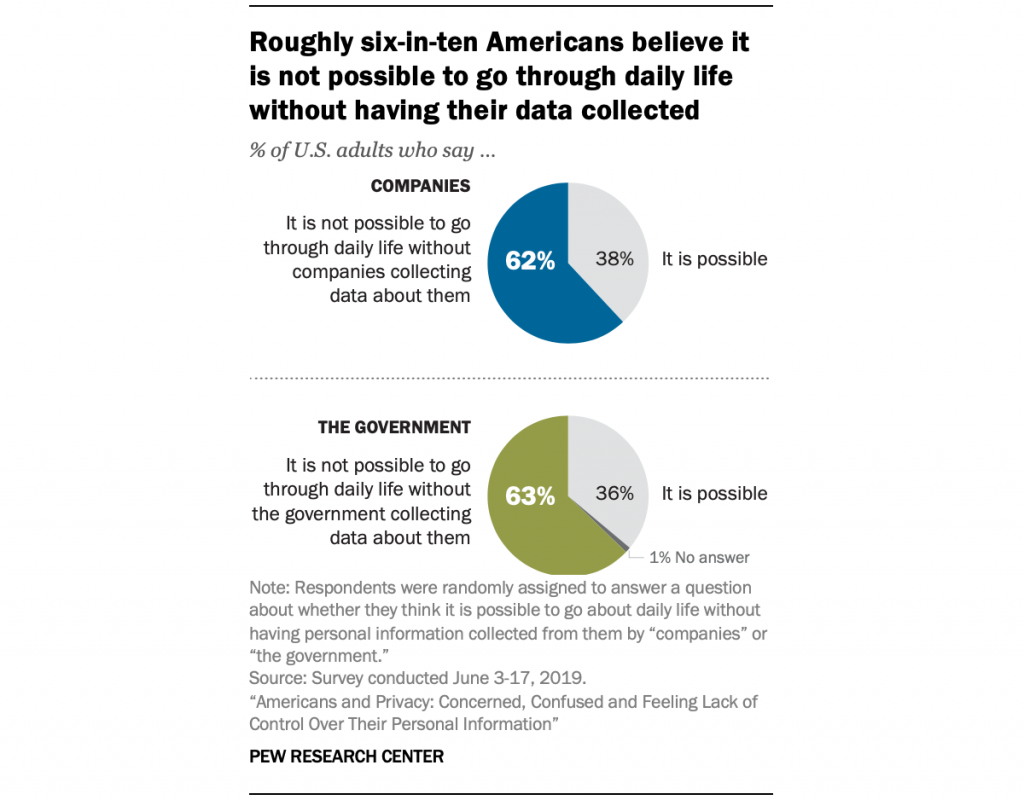
(Image Source: Pew Research)
Anonymous surveys address this concern by providing a safe space for respondents to share sensitive information.
To understand this, let’s check an anonymous survey example. In healthcare, patients may feel more comfortable disclosing personal medical history in anonymous surveys, leading to more accurate data for research and treatment planning.
Also Read: 10 Best Anonymous Feedback Tools to Collect Unbiased Insights
How Do Anonymous Surveys Work?
Anonymous surveys ensure participants’ identities remain undisclosed, encouraging honesty and reducing response bias. Respondents feel more comfortable sharing candid feedback without fear of repercussions, leading to more accurate data collection.
For example, employees may hesitate to express concerns openly if their identities are exposed in a workplace satisfaction survey. However, with anonymity assured, they’re more likely to provide honest feedback on issues like management style or workplace culture.
This fosters a transparent dialogue between employees and employers, facilitating meaningful improvements. By shielding identities, anonymous surveys creators can cultivate an environment where genuine opinions can thrive, benefiting individuals and organizations alike.
What Are the Benefits of Anonymous Surveys?

Anonymous surveys offer several advantages, providing a secure and comfortable environment for respondents to share their opinions, experiences, and feedback without fear of identification or repercussions.
Here are some of the major benefits of an anonymous survey:
1. Increased Honest Responses
Anonymity encourages respondents to provide truthful answers, especially on sensitive topics where honesty might be inhibited by fear of judgment or consequences. For instance, in a survey about workplace harassment, anonymity might encourage employees to disclose incidents they wouldn’t feel comfortable reporting openly, leading to a more accurate assessment of the situation.
2. Reduced Bias
Without the pressure of conformity or social desirability, respondents are more likely to express their genuine opinions rather than what they perceive as socially acceptable. This reduces response bias, providing a clearer picture of attitudes or behaviors. In a survey on political preferences, anonymity can mitigate biases influenced by public opinion or social norms, yielding more accurate data.
3. Enhanced Privacy
Anonymity safeguards respondents’ privacy by preventing the disclosure of their identity or personal information. This can be crucial when collecting sensitive data, such as health information or experiences with discrimination, where confidentiality is paramount. A survey on mental health issues might encourage participation from individuals who value their privacy and wouldn’t feel comfortable sharing personal details openly.
4. Increased Response Rates
Anonymity can lead to higher response rates as respondents feel more at ease knowing their responses are confidential. People are more likely to participate in surveys when they perceive minimal risk or exposure. For example, a customer satisfaction survey conducted anonymously may yield higher response rates compared to one that requires personal information.
5. Mitigated Social Desirability Bias
Anonymity reduces the tendency for respondents to provide answers that align with societal expectations or norms rather than their true beliefs or experiences. This is particularly beneficial in surveys about sensitive or stigmatized topics, such as substance abuse or sexual behavior, where individuals may feel pressure to present themselves in a favorable light.
6. Inclusive Participation
Anonymity promotes inclusivity by creating a level playing field where all respondents, regardless of their background or status, can contribute without fear of discrimination or prejudice. This encourages participation from marginalized or vulnerable groups who might otherwise be hesitant to share their perspectives openly. For instance, in a survey on diversity and inclusion, anonymity ensures that all employees feel comfortable expressing their views without fear of retribution.
7. Encourages Constructive Feedback
Anonymity fosters an environment where respondents feel empowered to provide candid feedback, including criticism and suggestions for improvement, without the fear of reprisal. This is valuable in organizational surveys aimed at identifying areas for growth and development. Employees might be more willing to offer constructive feedback on management practices or company policies if their responses are anonymous.
8. Facilitates Comparative Analysis
Anonymity allows researchers to analyze responses based on demographics or other variables without identifying individual participants. This enables comparative analysis to identify patterns or differences across different groups without compromising confidentiality. For instance, in a study on gender equality, anonymity ensures that responses from male and female participants can be compared without revealing their identities.
9. Protects Vulnerable Populations
Anonymity provides protection for vulnerable populations, such as survivors of abuse or individuals with sensitive medical conditions, who may face risks if their identity is disclosed. By ensuring confidentiality, anonymity encourages these individuals to participate in research without fear of retaliation or harm. For example, in a survey on experiences of domestic violence, anonymity allows survivors to share their stories safely.
10. Compliance With Ethical Standards
Anonymity is aligned with ethical principles of research, ensuring that respondents’ rights to privacy and confidentiality are respected. It demonstrates a commitment to ethical conduct and fosters trust between researchers and participants. Whether in academic research or organizational assessments, anonymity helps maintain ethical standards by safeguarding participants’ confidentiality and anonymity.
How to Create Anonymous Surveys
Creating an anonymous survey is easy. You just need to use a good survey tool, such as Qualaroo, which can help you create a survey in just a few minutes and even assist in analyzing the outcomes.
The best part is that the surveys created through this tool do not require the input of any personal details of the respondents.
Here are the steps you need to follow to create an anonymous survey using Qualaroo:
Step 1: Log in to your Qualaroo dashboard and click ‘Create New.’

Step 2: Select ‘Link Nudge.’ You can either choose a template or create it from scratch.
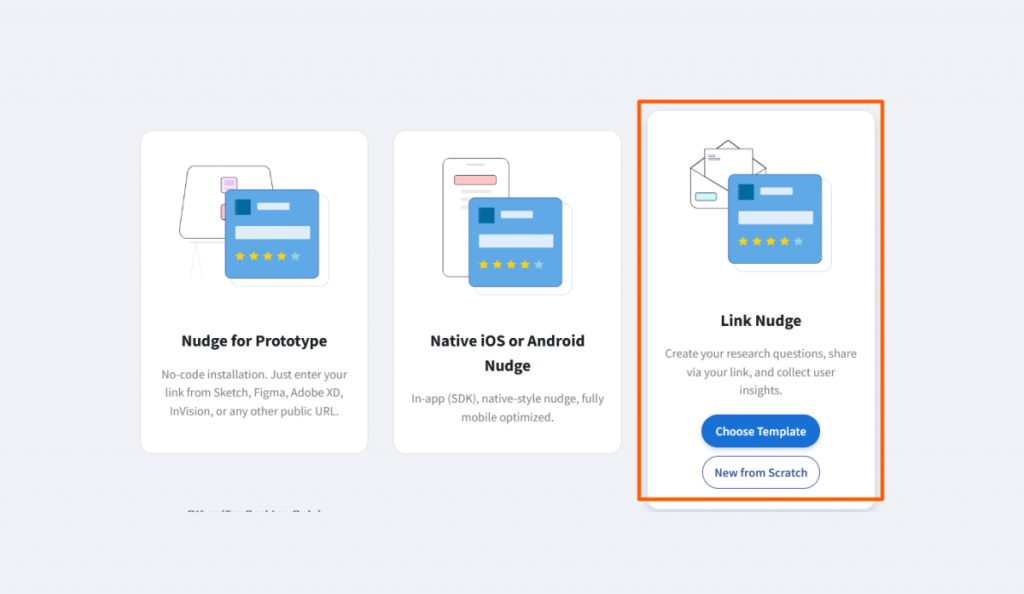
Step 3: Go to the edit section and enter the question text, answer type, answer choices, and proceed to TARGETING.

Step 4: Select the display and the preferred email notification frequency from the drop-down list in the Targeting section.
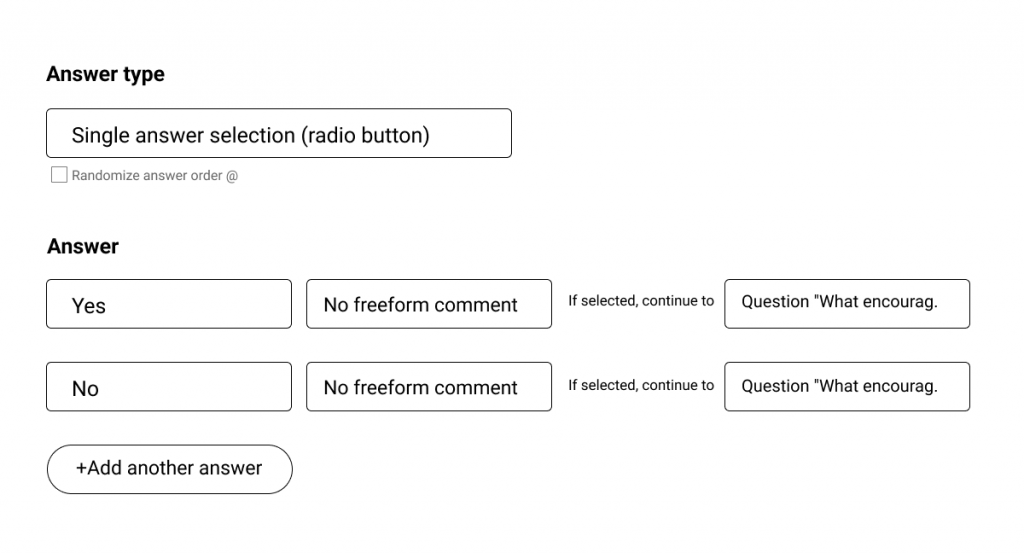
Step 5: Click DESIGN to continue. You can even select a color scheme, customize the nudge, questions, and answers, and add your logo to the survey.

Step 6: Click Save and Activate.
Your anonymous link survey is ready to share. You can copy the survey link and send it to the respondents via mail or SMS, post it on social media, or paste it on your webpage.
Tips for Creating Anonymous Surveys
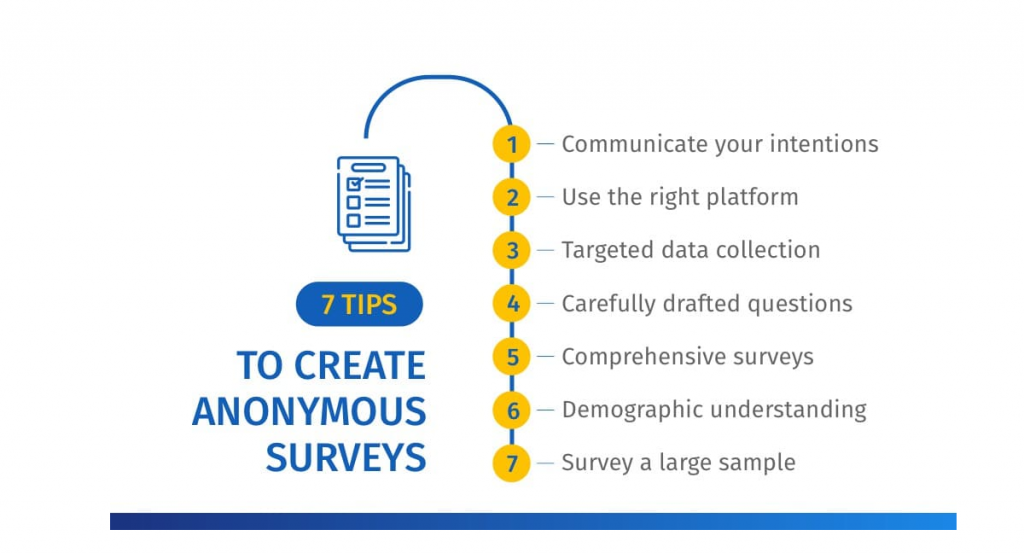
Creating anonymous surveys involves careful planning to ensure respondents feel comfortable providing honest feedback without the fear of identification.
Here are some tips to help you create effective anonymous surveys:
- Use a Robust Online Platform: Choose a survey platform that supports anonymous responses. Many online survey tools offer this feature, ensuring respondent anonymity by not capturing any identifying information.
- Avoid Personal Questions: Keep your survey focused on the topic at hand and avoid asking personal or sensitive questions that could potentially identify respondents.
- Don’t Collect Identifying Information: Avoid asking for any information that could potentially identify respondents, such as names, email addresses, or IP addresses.
- Assure Anonymity: Clearly communicate to respondents that their responses are anonymous and will be kept confidential. Assure them that their feedback will only be used for research or evaluation purposes. You can also provide opt-out and do not track settings for users.
- Randomize Response Order: Randomize the order of response options to minimize bias and prevent respondents from being influenced by the order of choices.
- Use Closed-Ended Questions: Closed-ended questions (multiple-choice, rating scales, etc.) are often easier to answer anonymously than open-ended questions. They also make analysis more straightforward.
- Offer an Opt-Out Option: Provide respondents with the option to skip questions they feel uncomfortable answering. This reinforces the idea of voluntary participation and helps maintain anonymity.
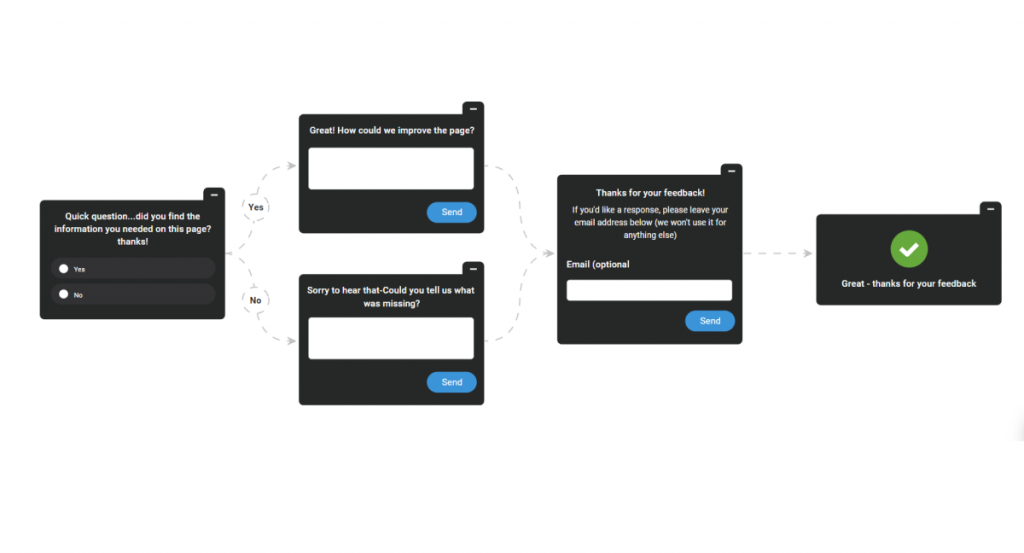
- Limit Demographic Questions: If demographic information is necessary for your survey, keep it minimal and avoid questions that could potentially identify individuals.
- Test Your Survey: Before distributing your survey, test it thoroughly to ensure anonymity is maintained and that respondents can complete it without encountering any issues.
- Monitor Responses: Regularly monitor responses to ensure the anonymity of respondents is maintained throughout the survey process. Remove any identifying information accidentally collected.
- Secure Data Storage: If you’re collecting any data, ensure it’s stored securely and access only restricted to authorized personnel.
- Make Ethical Considerations: Always consider the ethical implications of your survey and ensure it complies with relevant regulations and guidelines, such as GDPR, for surveys conducted in the EU.
Case Study : How HootSuite used Qualaroo to get a 16% lift in conversion at 98% statistical significance.
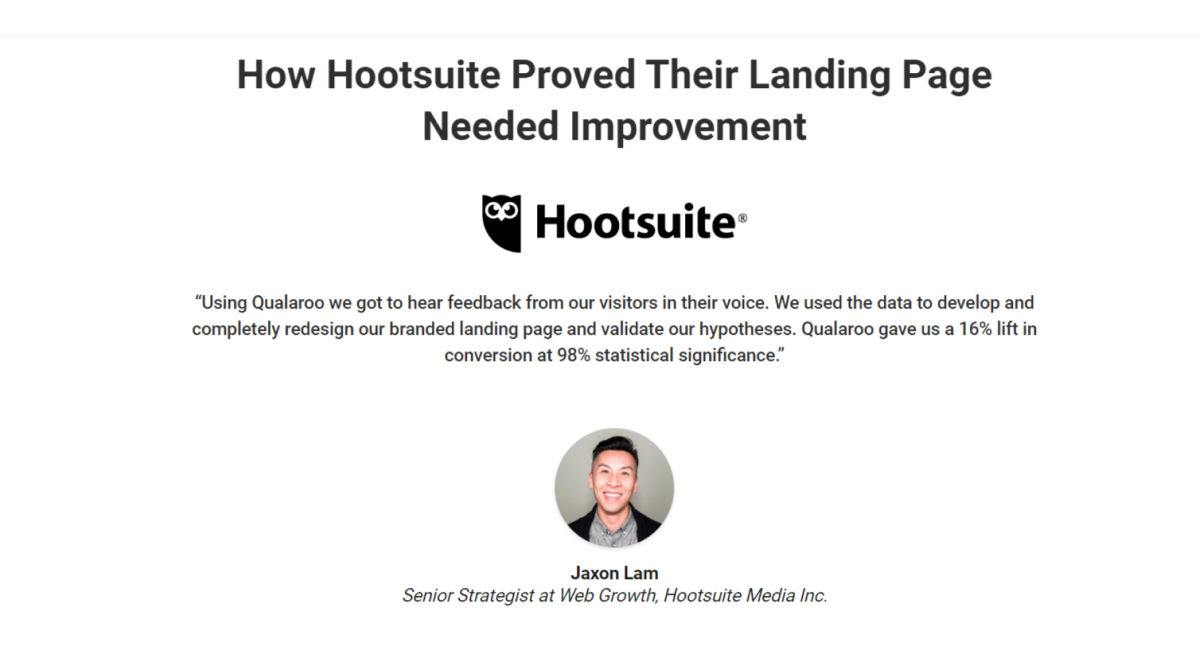
Unlock Honest Feedback With Anonymous Survey Tools
As we observed, anonymous surveys not only safeguard respondents’ privacy but also encourage candid feedback, fostering trust and participation. They empower individuals to share their thoughts honestly, free from the fear of judgment or repercussion.
If you wish to create such surveys, you can use an anonymous survey online tool like Qualaroo to help you create these surveys easily. It contains customizable templates and advanced analytics that ensure genuine insights for informed decision-making, enriching the understanding of audiences while respecting their privacy.
FREE. All Features. FOREVER!
Try our Forever FREE account with all premium features!


